Google’s Page Experience Update Launching May 2021
Just the other day I was searching the web for a local HVAC contractor. I needed to schedule my furnace tune-up (I know … I’m late.) After about 10 minutes of searching, I finally found a company that looked reputable. I then started filling out the form on their website to schedule service.
But the form kept moving on me—jumping up and down the page—and when I could finally click “submit,” the form took forever to load. I even submitted it a second time because I wasn’t sure if the first was successful.
I didn’t end up booking a tune-up with this company because my experience interacting with this website was awful.
And this is exactly what Google’s page experience update, set to launch in May 2021, is targeting—poor user experiences on websites. It’s also the start of a big shift in SEO for home service companies.

It’s rare that Google tips off local business owners to a new algorithm update. History shows that when Google warns us of upcoming algorithm updates that it will be of significant size and stature—and we at Blue Corona expect Google’s page experience update to be no different.
It’s going to be big.
In this blog, we’ll cover everything you need to know about Google’s page experience update, including:
- What is Google’s page experience update?
- Page experience ranking factors (current and new)
- Core Web Vitals and their impact on page experience
- How to measure your website’s page experience scores
- Page experience scores and benchmarks
- The potential impact of not meeting Google’s page experience requirements
- How to make your website compliant with Google’s page experience update before May 2021
Let’s get started.
What Is Google’s Page Experience Update?
We went straight to Google, the page experience experts themselves, for the answer to this one:

“The page experience signal measures aspects of how users perceive the experience of interacting with a web page. Optimizing for these factors makes the web more delightful for users across all web browsers and surfaces, and helps sites evolve towards user expectations on mobile. We believe this will contribute to business success on the web as users grow more engaged and can transact with less friction.” (Google)
In other words, page experience is a collection of data points that measure how efficiently website visitors interact with your website. The better you score, the higher you can potentially rank on Google search results pages for products and services relevant to your business. The worse your website scores, the lower you may rank on Google search results.
Current Page Experience Ranking Factors
Page experience as a ranking factor exists today. It’s one of more than 200 ranking factors that determine how high your company ranks on Google’s search results. It includes:
- Mobile-friendliness – Is your site mobile-friendly? Meaning, it can easily be viewed across desktop, laptop, tablet, and mobile devices? In 2021, the answer is most likely ‘yes.’
- Safe browsing – Does your site have security issues such as unsafe malware, deceptive pages, or harmful downloads? It might, and if you’re not sure you should consider investing in additional website security tools from your website management company.
- HTTPS – Is your site HTTPS or HTTP? An SSL certificate installed on your website’s hosting environment ensures customer data is transferred with a secure, encrypted connection. You receive a ranking boost on Google search results while customers browse safely on the web.
- No intrusive interstitials – Do popups or standalone interstitials block website visitors from viewing the website content they want to see? For home and commercial service companies, the answer is most likely ‘no.’

Page experience is only a ranking factor in mobile searches, but it is anticipated to rollout across desktop searches in the coming months.
New Page Experience Ranking Factors (May 2021)
In May 2021, Google will introduce Core Web Vitals into its page experience ranking signal in addition to mobile-friendliness, safe browsing, HTTPS, and intrusive interstitials.
Core Web Vitals are a set of real-world, user-centered metrics that quantify key aspects of the user experience. They measure dimensions of web usability such as load time, interactivity, and the stability of content as it loads (so you don’t accidentally tap that button when it shifts under your finger – how annoying!). (Google)

Core Web Vitals can be broken down into three metrics:
- Loading (Largest Contentful Paint or LCP) – Largest Contentful Paint measures how long it takes for the largest content element (e.g., a banner image, video, contact form, etc.) on your page to become visible in the users’ viewport. Put simply, LCP measures how quickly your web page loads.
- Interactivity (First Input Delay or FID) – First Input Delay measures how quickly users can interact with your website in their browser. Keeping your website’s code lean by reducing third-party scripts will improve your site against FID.
- Visual Stability (Cumulative Layout Shift or CLS) – Cumulative Layout Shift measures the amount of visual change to your web page after a user starts interacting with it. The lower the score, the better the experience for your website visitors.
In other words, Google is looking for how usable your website is. Here’s an example of what they don’t want to see:
As you can see, the user in the video attempts to click the “No, go back” button. However, an install popup bar loaded at the top, causing the user to accidentally click on “Yes, place my order.”
The purpose of Google’s page experience update is to make sure that sites that rank at the top of search results aren’t creating experiences that users hate.
Page experience is the start of a big shift in search engine optimization (SEO).
Core Web Vitals: What Are They & How Do They Impact Page Experience?
Although we don’t know how much mobile-friendliness, safe browsing, HTTPS, and intrusive interstitials are weighted as part of Google’s page experience ranking factor today, what we do know is that for the new Core Web Vitals signals, Google is using an object-oriented approach to determine their impact.
This means that LCP, FID, and CLS will be scored uniquely from one another and combined with previously existing page experience signals to determine your final page experience score.
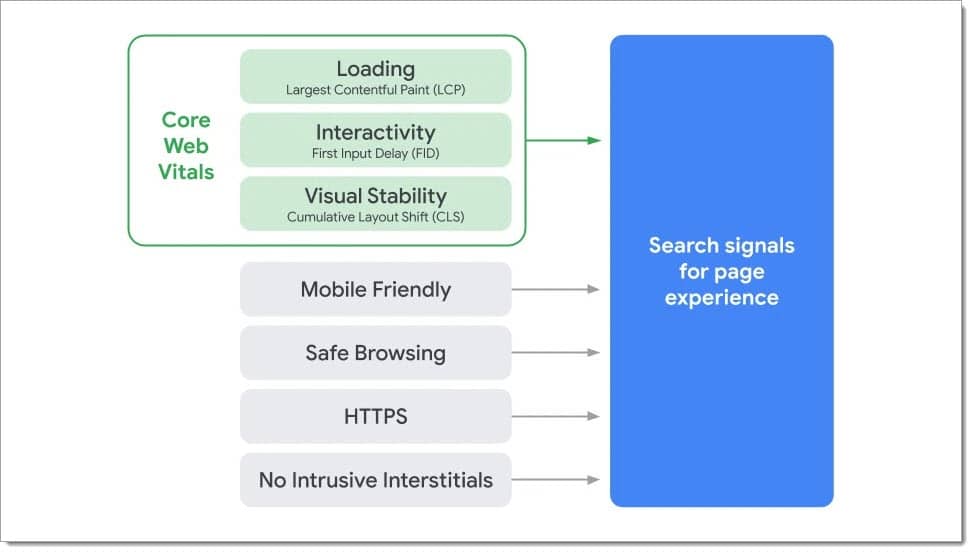
How to Measure Your Website’s Page Experience Scores
Measuring your website’s page experience scores is easy. You can use tools like Pagespeed Insights and Google Search Console to measure LCP, FID, and CLS.
Using Pagespeed Insights, visit https://developers.google.com/speed/pagespeed/insights/ and copy/paste your website’s home page. Then, click the “Analyze” button to see your scores.
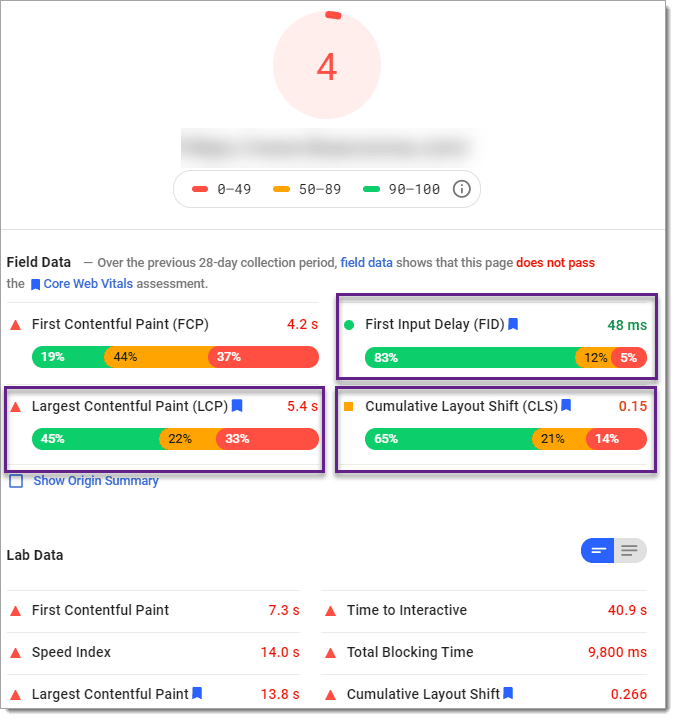
Using Google Search Console, visit https://search.google.com/search-console/about, sign in, and click “Core Web Vitals” in your left sidebar.
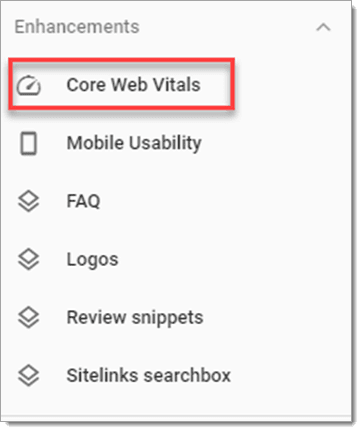
From here, you’ll get a detailed breakdown of web pages that do not meet Google’s recommended Core Web Vitals scores.

Google’s Page Experience Scores & Benchmarks
Using Google Search Console and Pagespeed Insights, you’ll want to make sure all of your web pages receive a passing score on Google’s Core Web Vitals report.
If they don’t, contact your webmaster (or give us a call) to learn more about how to correct it.

- Largest Contentful Paint – 2.5 seconds or less
- First Input Delay – 100 milliseconds or less
- Cumulative Layout Shift – 0.1 or less
How Page Experience Will Impact SEO & PPC Performance
So, how will Google’s page experience update impact the performance of your SEO and PPC campaigns?
Great question, and nobody except the engineers at Google know the full answer. However, Google is taking their current user experience ranking factors a step further by introducing a visual indicator to its search result pages that will quickly tell users whether or not the page they’re about to click on has a good or bad user experience.
Search Results Will Include a Visual Indicator & Impact Campaign Click-Through Rates
First, Google is introducing a visual indicator on its search result pages—next to your pages—telling users whether or not your site has a good user experience or bad one. They haven’t shared what the indicator will look like yet.
Expect this indicator to directly impact your website’s click-through rate.
Click-through rate is a ratio showing how often people who see your search results end up clicking it.
For example, if 5 out of every 100 people clicked on your website from Google search results, your click-through rate would be 5%. A higher click-through rate means your website has a better chance of outranking your competitors in the organic search results. It also means your PPC ads may outrank other advertisers.
If your site exceeds Google’s benchmarks for LCP, FID, and CLS, you’ll be awarded with a positive visual indicator after the page experience update goes live.
If not, your site will include the dreaded negative visual indicator, and your click-through rate, ad positioning, and organic rankings will suffer.
How to Make Your Website Compliant with Google’s Page Experience Update
As a business owner, I don’t recommend mastering the ins-and-outs of Core Web Vitals and page experience. It’s complex and not worth your time.
Instead, any reputable home services digital marketing company should be able to diagnose your page experience issues and work with you to correct them. In most cases, a website redesign is your best bet to pass Google’s page experience standards and lay a solid foundation for your online marketing to prosper.
Google Page Experience Update: Making the World’s Information More Easily Accessible
Google is more than a search engine. It’s the world’s second-largest internet company whose mission is, at face value, simple: Organize the world’s information and make it universally accessible and useful.
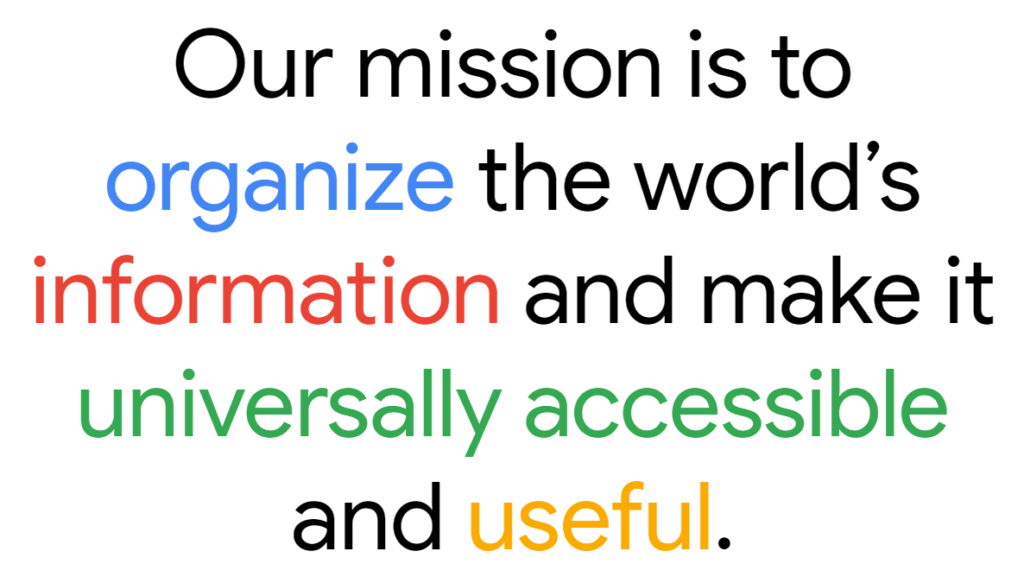
While Google’s mission seems simple, it’s never-ending, and the introduction of Core Web Vitals and its expansion of page experience as a ranking factor is the latest example of Google’s mission in action.
Every actionable change from Google requires a reaction from local business owners. A shift in thinking. A pivot in strategy.
Google’s page experience update will target users’ experience directly while they browse your website. Local companies whose sites meet the new page experience standards will prosper once the update is live, and those who do not will suffer the consequences.
At Blue Corona, we view Google updates such as page experience to be an opportunity to capture more online visibility, increase leads and sales, and differentiate our clients’ businesses on the web.
You should too.
Don’t Fall Victim to Google’s Page Experience Update – Call Blue Corona
Blue Corona is an award-winning digital marketing company focused on growing the trades. We specialize in helping home and commercial service businesses increase leads and sales from the web, optimize their marketing investments, and differentiate their brands online using a proprietary website framework proven to pass Google’s page experience and Core Web Vitals standards.
Need help? We’re only a call, click, or web form away!

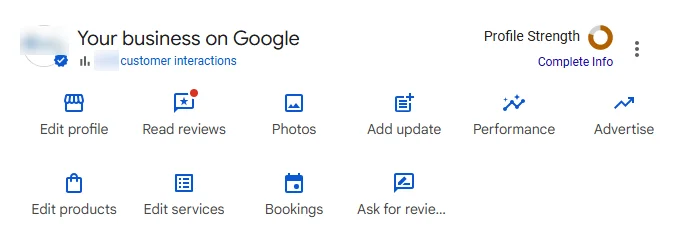



Recent Comments